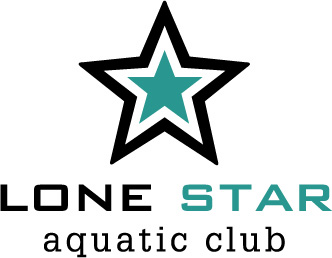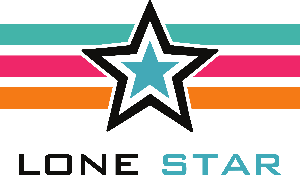Dryland - Plyometrics

Background
Plyometrics revolutionize the way swimmers compete, injecting a surge of power and explosiveness into their strokes. It's not merely about the hours logged in the pool; it's about maximizing every ounce of athleticism. As swimmers ascend to higher echelons of skill, traditional methods alone won't suffice. Enter plyometrics: the secret weapon in unleashing untapped potential.
Imagine the raw force of a swimmer's dive off the blocks, propelled by the energy of lightning-fast muscle contractions. That's the essence of plyometrics at work. Those jump boxes at the pool aren't just pieces of equipment; they're portals to enhanced performance. They're the proving ground where athletes forge a symbiotic relationship between strength, speed, and precision.
Plyometrics isn't a compulsory aspect of our training regimen; it's a choice reserved for those hungry enough to push beyond their limits. It's the extra mile, the additional rep, the relentless pursuit of excellence. For Junior 3, Senior, and Elite swimmers, plyometrics before practice on Mondays, Wednesdays, and Fridays isn't just an option; it's an opportunity to soar higher, swim faster, and compete with unparalleled ferocity.
Dryland Training
What is dryland?
Dryland training stands as the bedrock of a LSAC swimmer's prowess, transcending age barriers to sculpt athletes of unparalleled strength and agility. We have a longstanding histroy of developin gtop talent in the nation as well as the wrold. Dryland isn't just about pumping iron; it's about functional exercises meticulously designed to mimic the dynamic demands of the water. Every movement is a symphony of muscle engagement, orchestrated to perfection.
Picture a swimmer executing intricate, compound movements that demand not only physical prowess but also unwavering focus and energy. These exercises aren't mere repetitions; they're pathways to heightened muscle recruitment and refined technique. Each session isn't just a workout; it's a journey of evolution, with modifications tailored to suit the athlete's progression throughout the season.
In the realm of dryland training, every exercise is a testament to the holistic integration of Skill Related fitness*. It's not just about building muscle; it's about honing agility, coordination, balance, and power. The core reigns supreme, the epicenter from which all movements radiate. Engaging the chest, hips, abdominals, and back, it serves as the nexus of strength and stability, propelling swimmers forward with unwavering force.
But let's dispel the myth: the core isn't just about sculpted abs. It's a complex network of muscles spanning nearly half the body, intricately connected to the pelvis and spine. From the flutter of a kick to the twist of a turn, every action hinges upon this foundational powerhouse. In the realm of swimming, where every stroke is a testament to precision and power, the core isn't just essential—it's non-negotiable.
The Muscles that Make up your Core
The Posture Regulator
The trapezius muscle connects your spine to your shoulder blades. It stabilizes the upper body for everything from good posture to a powerful chest drive during the butterfly and breaststroke extension.
The Body's Stabilizer
The ability to do any downward pulling movement, like a freestyle stroke or a breaststroke pull-down, comes from the latissimus dorsi, or lats. This muscle also links the shoulder blades, upper arms, spine, and pelvis, which makes it a critical stabilizer for the core — and the entire body.
The Powerhouse
The strength to sprint or drive off the wall comes from the gluteus maximus, one of the body's largest muscles, and the ability to balance on one leg from the gluteus medius. 50% of all athletic movement initiates from these two muscles working together in unison.
The Core's “Core”
What we think of as the core muscles — the rectus abdominus, or six-pack, and the obliques, which span the entire side of your torso — are essential for bending (frontal plane movement) and twisting (transverse - think free and back). Even more crucial for a solid center is the transversus abdominis. Buried under the other abdominals, this thick muscle wraps around your torso and acts like a girdle, keeping your core tight and aligned.
The Support System
Hip adductors attach to the inside of your pelvis, and they're what keep you stable and aligned when you kick. Lack of movement and these thin muscles can shorten and tighten, pull your pelvis forward, and make your hamstrings seize up. During the early portion of our preseason, we spend about 50% of our practices working on the kick. This allows our athletes to build a solid neuro-pathic foundation that can be utilized for the remainder of the season.
The Reinforcements
Located in your lower back, the quadratus lumborum and the spinal erectors which allow you to stand up straight and rotate, and they work with the glutes to power upward-pulling motions like a dead lift or a kettlebell swing. Movement must then follow through the arms and legs (extremeties).
It is important to know when and how much to perform these exercises in a safe environment. Planning these exercises should fall in place with different parts of the season and should be fun. We want our swimmers to push themselves as hard as they can, but at the same, they have to have fun doing it! Because when it gets down to it, the scariest swimmer is the one with the biggest smile on their face!
So what are plyometrics?
Plyometrics (Jump Training) refers to activities that enable a muscle to reach maximal force in the shortest possible time. These moves are explosive in nature are crucial in developing functional training patterns need for when we dive in, push-off the wall, dolphin kick, etc.
Why plyometrics and swimming?
Plyometric training is the bridge between strength and speed and the staple of our dryland program. It's what we do best. By honing in on quick, powerful movements, our athletes are able to greatly increase their movement velocity needed for high level performance.
The goal of plyometric training is to increase an athlete’s reactive ability by stressing the amortization phase of the Stretch Shortening Cycle (SSC). During a plyometric session, kinetic energy is gathered (in the tendons and soft tissues) during a rapid eccentric movement and may be explosively released into the concentric phase. Exploiting this stretch shortening cycle produces more force than may be achieved in a purely concentric motion. This also helps to develop the whole neuromuscular system and not just contractile tissue, allowing the body to become faster and stronger at the same time.
This pre-loading, which occurs in the direction opposite to that of the ultimate motion, activates a muscle spindle reflex that signals the muscles to contract powerfully. Plyometric training develops the ability to rapidly, powerfully change directions as well as inducing neuromuscular changes that speed an athlete’s contraction times. Plyometric training includes standing jumps, bounds, depth jumps, throws and catches, push-ups etc. Clapping Pull-ups would be considered a plyometric movement.
Many athletic movements include a loading phase during which the affected muscles are rapidly stretched. An example of this would be when a boxer throws a punch, or when a basketball player goes for a rebound. In regards to swimming, loading occurs when during the start and during the turn, or when a swimmer initiates the kick in breaststroke.
Our favorite plyometric exercises
Adaptations
The physical adaptations, also known as neuromuscular facilitation, is the process by which the neuromuscular system memorizes motor skills, such that the signals from the brain to the muscle become semi-automatic, and the athlete no longer needs to concentrate so hard to create the desired movement. Functional strength training, developed through functional patterns, helps athletes develop muscle memory so that they can quickly access their movement patterns during training and in competition. More complex movements involving the whole body demand greater muscle recruitment.
In summary, a swimmer may increase their overall power in the water by using a variety of methods. Our research shows that combining plyometrics, body weight and stabilization into a dryland program is the optimal method for maximum endurance/power conversion. As always the timing and programming of these lifts are essential and must take place throughout the swim season.
*Skill related Components that define training*
- Cardiovascular/ respiratory endurance, defined as systemic endurance - efficient uptake, processing and delivery of O2
- Stamina - the body's systems efficiently process, deliver, store and utilize energy
- Strength - the ability of a muscle or muscle group to apply force
- Flexibility - the ability to maximize the range of motion (ROM) of any particular joint
- Power, defined as speed strength - the ability of muscles or groups to apply maximum force along minimum time cycle
- Speed - minimizing the time cycle of any given, repeated movement
- Coordination - the ability to combine several distinct movement patterns into a singular distinct movement
- Agility - minimizing transition time from one movement pattern to another
- Balance - the ability to control the placement of the body's center of gravity in relation to
- Accuracy - the ability to control movement in a given direction or at a given intensity



